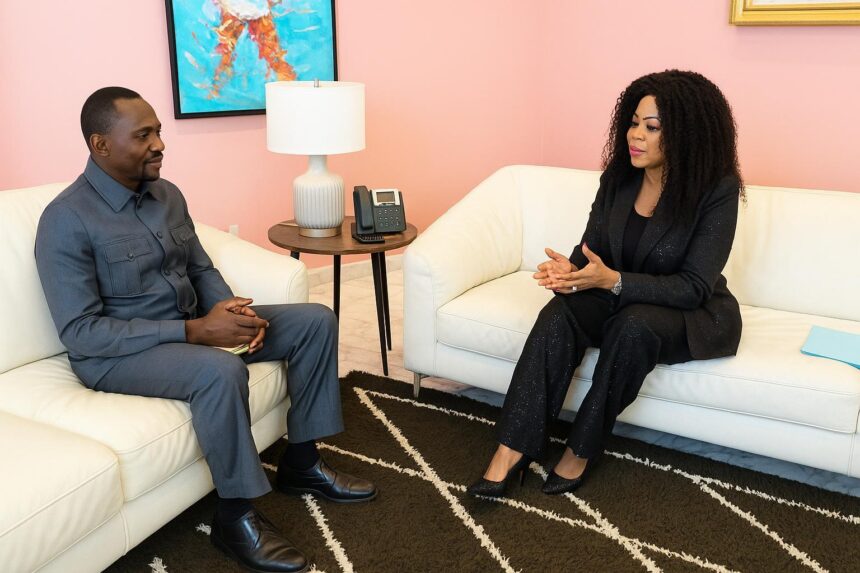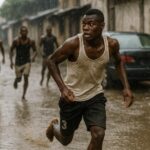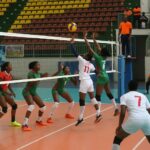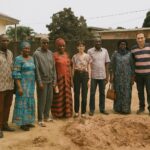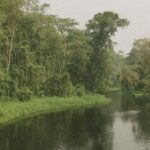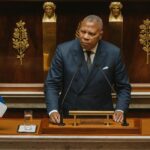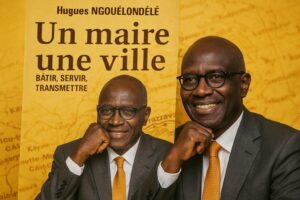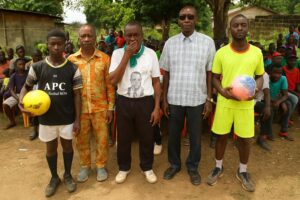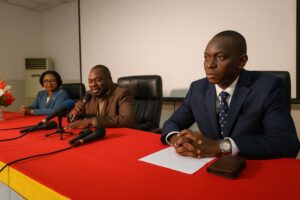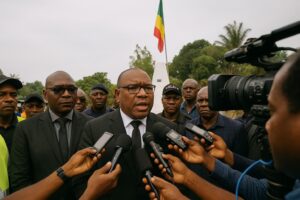A cross-border tribute takes shape
Plans are advancing to install a bronze bust of Sergeant Malamine Camara inside Brazzaville’s Pierre-Savorgnan-de-Brazza Memorial, officials confirmed after a recent meeting between Senegalese ambassador Ousmane Diop and the site’s director-general, Belinda Ayessa.
The sculpture will salute the Senegalese officer who stood beside explorer Pierre Savorgnan de Brazza during the 1880s and kept watch over the fledgling post that later grew into the Congolese capital.
According to Ms Ayessa, the project received Senegal’s official green light this month and now enters a practical phase involving artists, historians and protocol specialists from both nations (Les Dépêches de Brazzaville).
Who was Sergeant Malamine Camara?
Born in Saint-Louis, Camara joined France’s colonial infantry and was assigned to Brazza’s third expedition along the Congo River in 1880.
Sources from the Cheikh Anta Diop University archive describe him as a disciplined soldier, fluent in several local languages, whose diplomatic instincts often defused tension with nearby Téké and Kongo communities.
Most celebrated is the night of September 10 1880 when, with only twelve men, Camara reportedly persuaded a Belgian column to retreat, preserving French presence on the right bank and paving the way for today’s Brazzaville.
A symbol inside a symbolic site
The Pierre-Savorgnan-de-Brazza Memorial, inaugurated in 2006 under President Denis Sassou Nguesso, already houses the explorer’s remains, a permanent exhibition, a garden of remembrance and an open-air amphitheatre overlooking the river.
Adding Camara’s likeness, carved by a yet-to-be-named Senegalese sculptor, broadens the narrative by spotlighting Africa’s own actors in the colonial encounter, Ms Ayessa underlined.
Cultural geographer Roland Bouiti, interviewed by Télé Congo, argues the gesture helps younger Congolese visualise a chapter often taught only through European figures, turning the riverside memorial into a classroom without walls.
The memorial’s architectural team must balance aesthetics and conservation rules; any drilling close to the explorer’s crypt requires clearance from the national heritage council, whose engineers will run vibration tests before installation, Ms Ayessa told Congopresse.
City tourism officials expect the new bust to refresh visitor numbers, which averaged twenty-five thousand per year before the pandemic and have been slowly recovering since borders reopened.
In practice, the bust will stand on a red-granit plinth imported from Dimonika, a discreet nod to local geology that officials hope will keep maintenance costs low under Brazzaville’s humid equatorial climate.
Diplomatic momentum and timeline
During their Brazzaville meeting, Ambassador Diop handed Ms Ayessa a formal invitation from Dakar, where she will meet culture minister Aliou Sow and representatives of the Armed Forces history department.
Talks will finalise the artistic brief, material transport logistics and joint financing, reportedly split seventy-thirty between Senegalese public funds and Congolese partners including the memorial foundation.
If schedules align, casting could begin in Dakar by late July, followed by shipment via Pointe-Noire and ceremonial unveiling in Brazzaville during the October cultural season, insiders close to the file said.
Ambassador Diop praised Congo’s readiness, noting that technical teams have already mapped the pedestal’s exact coordinates, ensuring the bust faces the Congo River as Camara once did.
Congo’s foreign ministry views the project as cultural diplomacy; spokesperson Flore Mabiala says joint ceremonies will illustrate ‘an African fraternity beyond administrative borders’, complementing existing cooperation in rail and maritime affairs between Pointe-Noire and Dakar.
For Senegal, the spotlight on Camara coincides with preparations for the Nation’s Heroes Park in Dakar, meaning the two capitals could coordinate exhibitions, travelling photo archives and reciprocal school exchanges, according to ambassadorial briefing notes.
What visitors can expect next
While waiting, the memorial plans temporary panels retracing Camara’s life, QR codes linking to audio guides in French, English and Lingala, and a short documentary for social networks.
Schools from Brazzaville and Kintélé are being invited to interactive workshops where students will draw their vision of the sergeant, the best sketches potentially influencing the final patina colour.
Local artisans welcome the initiative; bronze-caster Augustin Goma says any increased footfall will spill over to neighbouring craft stalls, driving micro-economies that suffered during successive health restrictions.
Tour operators already package the memorial with boat rides to Malebo Pool; adding Camara’s story creates, in guide Hervé Okemba’s words, ‘a complete trilogy: the river, the explorer and the guardian’.
Economic analyst Irène Massanga estimates each additional foreign visitor spends an average of forty-five dollars in taxis, snacks and souvenirs, suggesting the bust could inject at least sixty-five thousand dollars into Brazzaville’s service sector its first year.
The memorial’s communication team plans a TikTok challenge inviting youths to reenact Camara’s legendary stand on the riverbank; winning clips will screen during the unveiling, blending history with the digital habits of Generation Z.
For visitors, the upcoming bust promises more than a photo opportunity; it anchors a shared history between Senegal and Congo and offers, as Ms Ayessa summarised, ‘a bridge of memory stronger than the river that separates and unites our peoples’.
Officials stress that every event will comply with the health measures currently in force.

